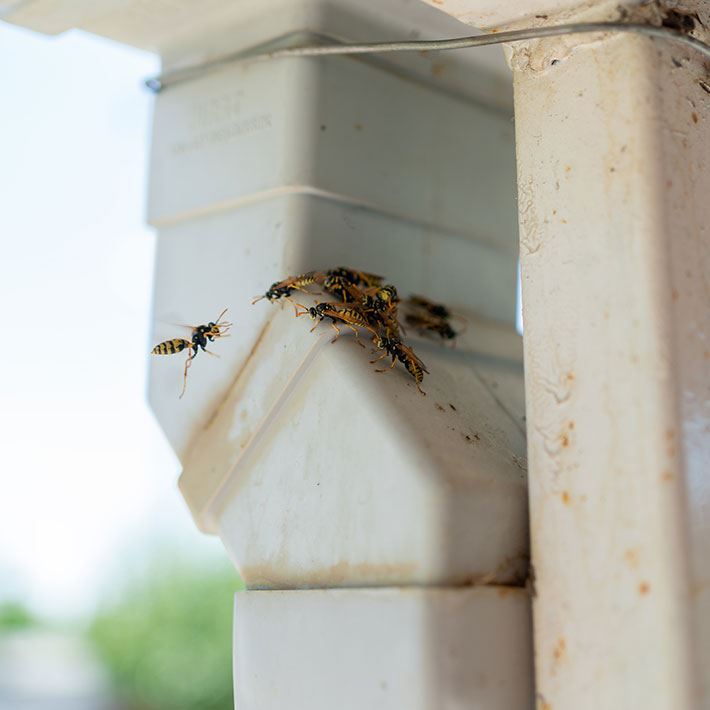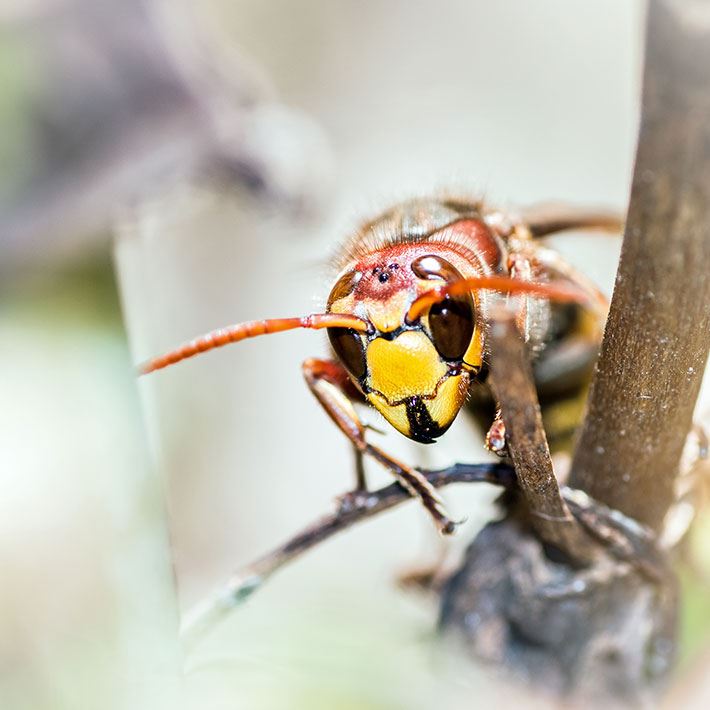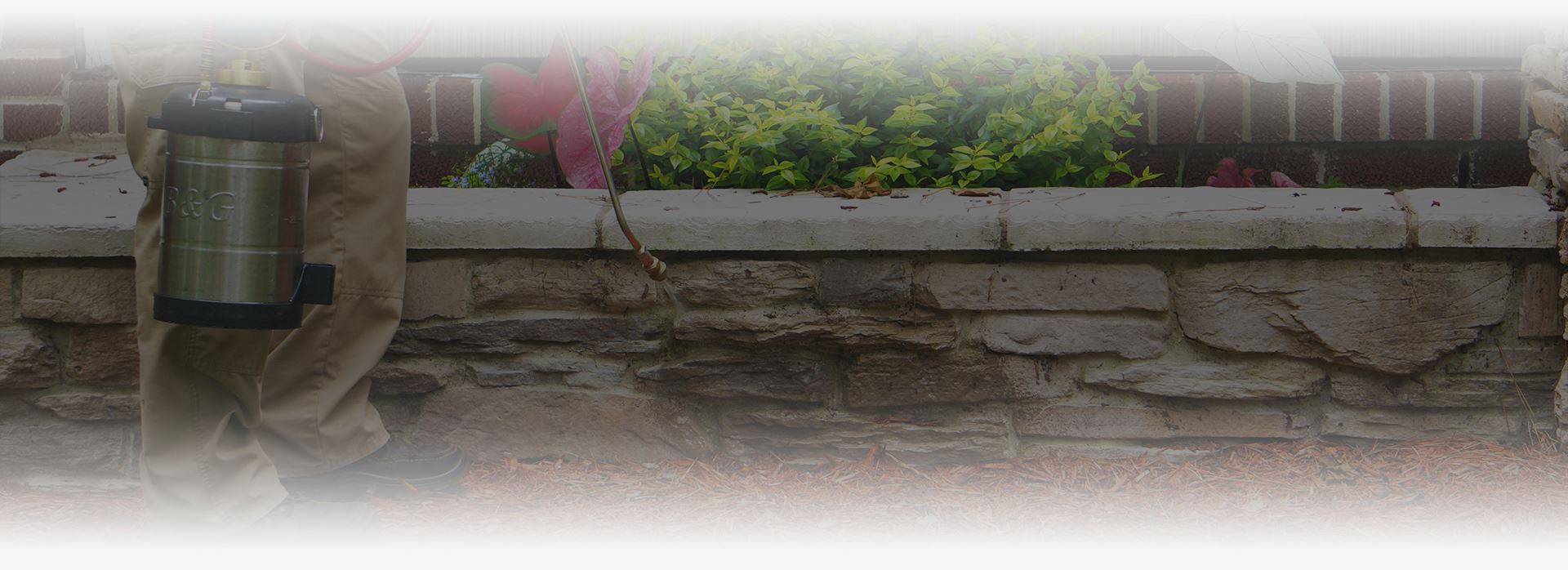


Stinging Insect Identification Guide
What are stinging insects?
Some of the most common and easy to recognize species of stinging insects are wasps, bees, and hornets; each has a stinger extending off the end of its abdomen. These insects, while beneficial, also pose a significant danger to people when they decide to nest in high traffic areas or on our homes or other structures.
Many species of stinging insects are predatory, usually preying on insects to help feed their developing young. Predatory stinging insects help to control populations of nuisance insects. Many stinging insects also feed on plant nectar, pollinating a wide variety of plants and crops as they feed.
If you want to be able to walk outside without the fear of stinging insects like wasps and hornets, call PESTOUT today for your courtesy comprehensive inspection or to schedule a service. We have Targeted Yard Treatments for stinging insects.
Are stinging insects dangerous?
Stinging insects don’t want to sting us, but will if they perceive us as a threat to them or their nest. The venom that stinging insects possess is strong enough to trigger an allergic reaction in those sensitive to their venom. Life-threatening anaphylaxis may occur in people that are severely allergic to their venom.

Why do I have a stinging insect problem?
Unfortunately, our yards often provide the perfect habitat for stinging insects. They have abundant food sources and plenty of places to build a nest. Stinging insects are most attracted to properties with multiple food sources. They will forage for food from gardens, trash and recycling cans, outdoor eating areas, and compost piles, all things found on most properties.
Where will I find stinging insects?
Stinging insects tend to be most active during the warm summer and early fall months. They are out and about searching for food to bring back to their colony. Whether the stinging insects are aerial or ground nesters will determine where they place their nests.
Most stinging insects build their nests on trees, in tree voids, on utility poles, the sides of homes, on chimneys, and under roof eaves or in doorways. Ground nesters, however, make their nests in places like ground holes, under woodpiles, in tree stumps, or the abandoned nests of small animals.
If stinging insects get inside your home, they usually build their nests in attics, crawlspaces, or wall voids.
How do I get rid of stinging insects?
To solve your stinging insect problem, it is best to partner with a professional. PESTOUT is committed to getting rid of stinging insects and other pests, and keeping them out! Here at PESTOUT, we are a family-owned company dedicated to serving the needs of our residential and commercial customers.
Our friendly professionals utilize advanced technologies to deliver the comprehensive pest control services needed to solve pest problems in Hampton Roads, VA. If you would like to learn more about implementing our stinging insect control services into your Hampton Roads, VA home or business, reach out to PESTOUT today. One call controls them all!


How can I prevent stinging insects in the future?
Prevent problems with stinging insects by implementing the following prevention tips in and around your Hampton Roads, VA home:
- Keep food and drinks covered when eating outside.
- Limit the amount of flowering vegetation planted near your home’s exterior.
- Empty trash cans and recycling bins regularly and keep tight-fitting lids on them.
- Remove fallen trees, logs, and tree stumps from your yard.
- Fill any ground holes on your property.
- Cut back any trees branches and shrubs from your home’s exterior.
- Caulk any openings in the exterior walls and roofline of your house.
- Repair your damaged window and door screens.
- Keep mesh covers over vents and chimney openings.
PESTOUT is proud of the high-quality services that we provide to our customers.

Types of Pests

Why Choose PESTOUT?
Local, Professional, Personable, Prompt, and Veteran Founded
-
Reputation
Our experienced and certified team is dedicated to providing you with great service and the highest value for your money.
-
Philosophy
We are committed to serving you with respect and integrity. If we make a mistake, we will fix it.
-
Industry Leading TechnologyOur team uses safe, environmentally friendly products to treat your pest and moisture problems.
-
Get a 100% Free EstimateGet started by giving us a call and setting up a free estimate.
What Our Customers Are Saying
-
“PESTOUT responded quickly for my issue immediately. Their staff are friendly, respectful of your time and property, knowledgeable, and professional.”- Beverly
-
“We have used PESTOUT for the last six years as our exterminator. We have not ever been disappointed. Great work, great people to work with.”- Brigitta
-
“Awesome service from the person I booked the appointment with to the person who came to our house.”- Brooke
-
“As a realtor I can refer my clients with the confidence that inspections are thorough and complete, and results are available in a timely manner.”- Charlotte
-
“They drill down to the true root of the big problem and immediately take care of it and do a great job of following up, as well!”- Samantha
-
“Great company for termite and moisture inspections. They provide quick service and great customer service.”- Joclyn
-
“We rely on and trust Pestout to keep us safe from unwanted pestles. Highly recommend.”- Eric
-
“We have used PESTOUT for several years. We are extremely happy with their affordable, great service and quality pest control.”- Pam



